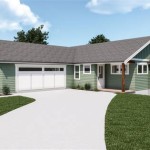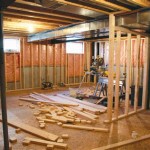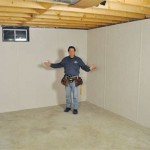Water Resistant Basement Wall Panels
Water resistant basement wall panels offer a practical and effective solution for protecting your basement from moisture and flooding. These panels are designed to create a barrier between the damp basement environment and the finished living space, preventing water damage and mold growth. In this article, we will explore the benefits, materials, installation process, and maintenance tips for water resistant basement wall panels.
Benefits of Water Resistant Basement Wall Panels
- Protection from moisture and flooding: Basement wall panels provide an impermeable barrier that prevents water penetration, protecting your basement from leaks, floods, and moisture buildup.
- Mold resistance: Damp environments can lead to mold and mildew growth, which can damage your belongings and pose health risks. Water resistant wall panels inhibit mold growth by preventing moisture absorption.
- Durability and longevity: These panels are made from durable materials that can withstand harsh basement conditions, ensuring long-lasting protection and minimal maintenance.
- Improved insulation: Some water resistant wall panels also provide thermal insulation, helping to maintain a comfortable temperature in your basement and reduce energy costs.
- Aesthetic appeal: Water resistant wall panels are available in a variety of finishes and textures, allowing you to customize the look of your basement while protecting it from moisture.
Materials Used in Water Resistant Basement Wall Panels
Water resistant basement wall panels are typically made from the following materials:
- Vinyl: Vinyl panels are lightweight, waterproof, and resistant to mold and mildew. They are available in a wide range of colors and patterns.
- Plastic: Plastic panels are durable, moisture-resistant, and easy to clean. They come in various textures and finishes, including simulated wood and stone.
- Fiberglass: Fiberglass panels are strong, waterproof, and fire-resistant. They are often used in commercial and industrial applications.
- Metal: Metal panels are extremely durable and moisture-resistant, but they can be prone to rust and corrosion. They are typically used in areas with high humidity or potential flooding.
- Composite: Composite panels combine different materials, such as vinyl and plastic, to create a durable and moisture-resistant product that offers a range of aesthetic options.
Installation Process for Water Resistant Basement Wall Panels
The installation process for water resistant basement wall panels typically involves the following steps:
- Prepare the wall surface: Remove any existing wall coverings, clean the surface, and repair any cracks or holes.
- Install a vapor barrier: A vapor barrier is a sheet of plastic or foil that helps prevent moisture from penetrating the wall. It is installed over the prepared wall surface.
- Attach the wall panels: The wall panels are typically attached using adhesive, screws, or a combination of both. Start from the bottom and work your way up, overlapping the panels as per the manufacturer's instructions.
- Seal the joints: Once the panels are installed, seal the joints between them using waterproof caulk or sealant to prevent moisture penetration.
- Install trim and accessories: Trim pieces and accessories, such as baseboards and corner guards, are installed to cover the edges of the panels and enhance the finished look.
Maintenance Tips for Water Resistant Basement Wall Panels
To ensure the longevity and effectiveness of your water resistant basement wall panels, follow these maintenance tips:
- Regular cleaning: Use a mild detergent and water to clean the panels regularly. Avoid using harsh chemicals or abrasive cleaners.
- Inspect for damage: Inspect the panels regularly for any signs of damage, such as cracks, holes, or loose joints. Repair any damage promptly to prevent moisture penetration.
- Check for leaks: If you notice any leaks or moisture buildup in your basement, check the wall panels for any compromised areas and repair them as necessary.
- Maintain humidity levels: High humidity levels can promote mold growth. Use a dehumidifier to control humidity levels in your basement and prevent moisture-related problems.

Brightwall Waterproof Basement Wall Covering In Clarksville Nashville Jackson Tn Ky And Al Wet Product For Tennessee Kentucky Alabama Homeowners

Dryshield Basement Waterproofing Panels Achieve A Dry

Insulated Basement Wall Panels Greater St Louis

Basement Waterproofing Waterproof Wall Panels Create Beautiful Space

Mold Resistant Waterproof Basement Wall Panels Trusscore

Brightwall Waterproof Basement Wall Panels

Basement Wall Installation Finishing Oklahoma City Vesta

Glasliner 4 Ft X 8 White 090 Frp Wall Board Mftf12ixa480009600 The Home

Basement To Beautiful Insulated Wall Panels Marianna Crawfordville Tallahassee Fl Inorganic Installed By Expert Contractors In Florida

Brightwall Waterproof Basement Wall Covering In Salem Beaverton Eugene Portland Or Vancouver Wa Wet Product For Oregon Homeowners








